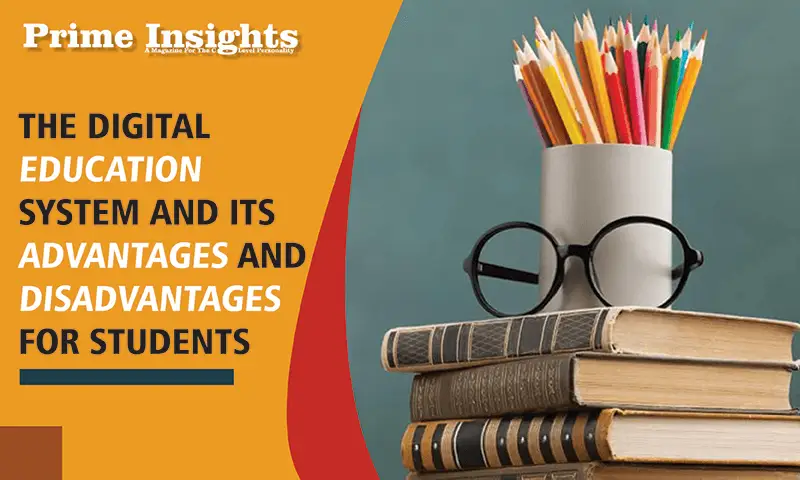The digital education system and its advantages and disadvantages for students
During this ongoing pandemic situation, the term ‘new normal’ has become common to all. The education system also adopted these ‘new normal’ norms by introducing a system of digital education through the increased use of online learning tools.
Many new ways of learning have been triggered to keep the ongoing process of educating the nation consistent and simultaneously by keeping up with the safety rules. Digital learning has emerged as a necessary resource for students of all ages around the world. Students are learning and adopting new techniques of education and academics. It has also extended learning along with performing extra-curricular activities as well. This has transformed the concept of face-to-face academic interaction into an online platform where learning and career counseling are equally encouraged. Additionally, the use of technology has taken a surplus growth with this new system of education in recent times.
However, every teaching method has its pros and cons. Let us look at some of the positivities and negativities associated with the digital education system:
Advantages
- Online education offers teachers an efficient way to deliver their teachings. With the use of several tools such as videos, podcasts, PDFs, teachers can explain their lessons significantly easier. This level of explanation is beyond any traditional textbook explanation.
- Digital education has made the accessibility of time and place easier for students. It allows them to attempt classes from their preferred location using their preferred devices. Schools can reach out to a more extensive network of students without being confined to restricted geographical boundaries. Online lectures can be recorded, achieved, and shared for future reference.
- Another significance of this learning process includes reduced financial costs. This system is far more affordable ads compared to physical learning since it eliminates the cost due to transportation, student meals, and especially real estate. Also, the study materials can be availed online making learning more reasonable and beneficial for all students.
- The most positive side of digital education is that it has improvised the rate of student attendance. The absence of students in offline institutes due to valid or invalid excuses has now lessened with time. Since online classes can be conducted from home or the location of your choice, there are fewer chances of students missing out on lessons.
- The learning styles and journeys of each student are different. While some of them are visual learners, others prefer audio learning. Likewise, some students love to be in the classroom whereas others get distracted by large groups. That is where online learning plays its role and personalizes its system with a range of options and resources. It creates a perfect learning environment suited to the needs of every student.
Disadvantages
- Students are unable to focus on screens for a long time making online learning a big challenge for them. Struggling to focus on the screen for long periods harm their eyesight and can also make them easily distracted by social media sites.
- Teachers find it difficult to keep all the students engaged in their online classes and at the same time make them equally interactive and responsive. It is a difficult struggle to keep a check on the whereabouts of each student portal on the screen.
- Another key challenge is the internet connectivity issue. Students hailing from smaller cities and towns lack the consistency of internet connection with decent speed. Therefore, their connection fails at times and a lack of continuity occurs in learning for them.
- Nowadays, a common problem of online education is social distancing or a sense of isolation from friends. Being in the company of peers, students can engage themselves in physical, mental, and emotional interactions. However, the sense of isolation cuts out all forms of physical communication with peers and teachers. Even online messages, emails, and video conferencing have resulted in a reduced state of proper understanding.
- The availability of teachers who are actually trained to use online digital tools and teach efficiently is rare. Many a time, old and traditional features are only adopted to a basic system of technology and they find it difficult to use the new necessary resources and tools to conduct the online classes.
- Managing class time is another serious problem while teaching online. Due to a lack of proper engagement and responsiveness, teaching somewhere gets obstructed or restricted under certain circumstances. And last but not the least, teachers also fail to understand whether their teaching methods are being productive or not.

